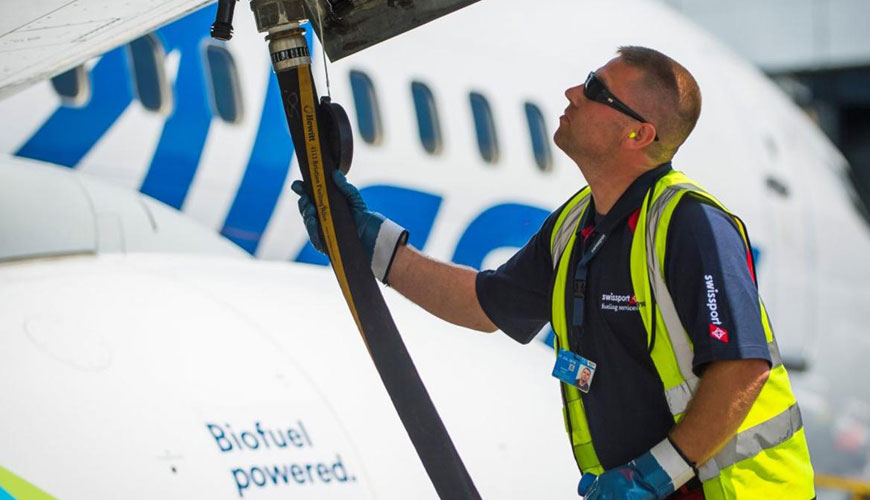

EUROLAB laboratory provides testing and compliance services within the scope of ISO 3013 standard. Developed by the International Standards Organization (ISO), the ISO 3013 standard specifies a procedure for determining below the temperature at which solid hydrocarbon crystals are present in aviation turbine fuels or aviation gasolines.

Use of this International Standard may involve hazardous materials, processes and equipment. This International Standard does not purport to address all safety problems associated with its use. It is the responsibility of the user of this International Standard to establish appropriate safety and health practices prior to use and to determine the applicability of regulatory restrictions.
The sample tube containing the test sample, a stirrer, collar and thermometer is placed in a vacuum flask containing a coolant. During the cooling cycle, the test sample is vigorously mixed and inspected for formation.
When crystals are observed, the temperature is recorded as the crystallization point. The jacketed sample tube is then removed from the cooler and the test sample is allowed to warm slowly. Stirring continues until all crystals have disappeared, at which point the temperature is recorded as the freezing point.
ISO 3013 Test Procedure
Transfer 25 ml + 1 ml test sample into a clean and dry sheathed sample tube. Tightly close the tube with the cork holding the stirrer, thermometer and collar; Adjust the thermometer position so that the bulb is 10 mm to 15 mm above the bottom center of the tube.
Compress the sheathed sample tube so that it extends into the vacuum flask containing the coolant. The surface of the test specimen should be approximately 15 mm to 20 mm below the coolant level. Add solid carbon dioxide as needed throughout the test to maintain the coolant level in the vacuum flask.
Except for observations, stir the test sample continuously, moving the agitator up and down at a speed between one revolution per second and 1,5 revolutions per second. Mix the test sample from top to bottom, taking care that the agitator rings do not come into contact with the bottom of the jacketed sample tube or protrude above the test sample surface.
During the cooling cycle, examine the test sample for the presence of crystals. Ignore clouds that appear at around -10°C and do not increase in density as the temperature drops; This is because of water. However, if such a cloud does occur, make a note of the observation in the report, giving a description of the cloud's temperature at the time it first appeared and a description of its persistence.
If the appearance of the crystals becomes difficult to see due to gases released by the cooler, the jacketed sample tube may be removed from the cooler for a period not exceeding 10 seconds. If it is found that crystals have already formed, note the temperature of the sample and allow the sample to warm up to 5 OC warmer than the temperature at which the crystals appear to have disappeared. The sample tube should then be changed in the cooler and allowed to cool. When the temperature of the sample is slightly warmer than the specified temperature, the crystallization point can be observed by removing the sample tube from the cooler.
Among the services provided by our organization within the framework of material testing services, there are also ISO 3013 standard tests. Do not hesitate to contact our laboratory EUROLAB for your testing and certification requests.
To get an appointment, to get more detailed information or to request an evaluation, you can ask us to fill in our form and reach you.